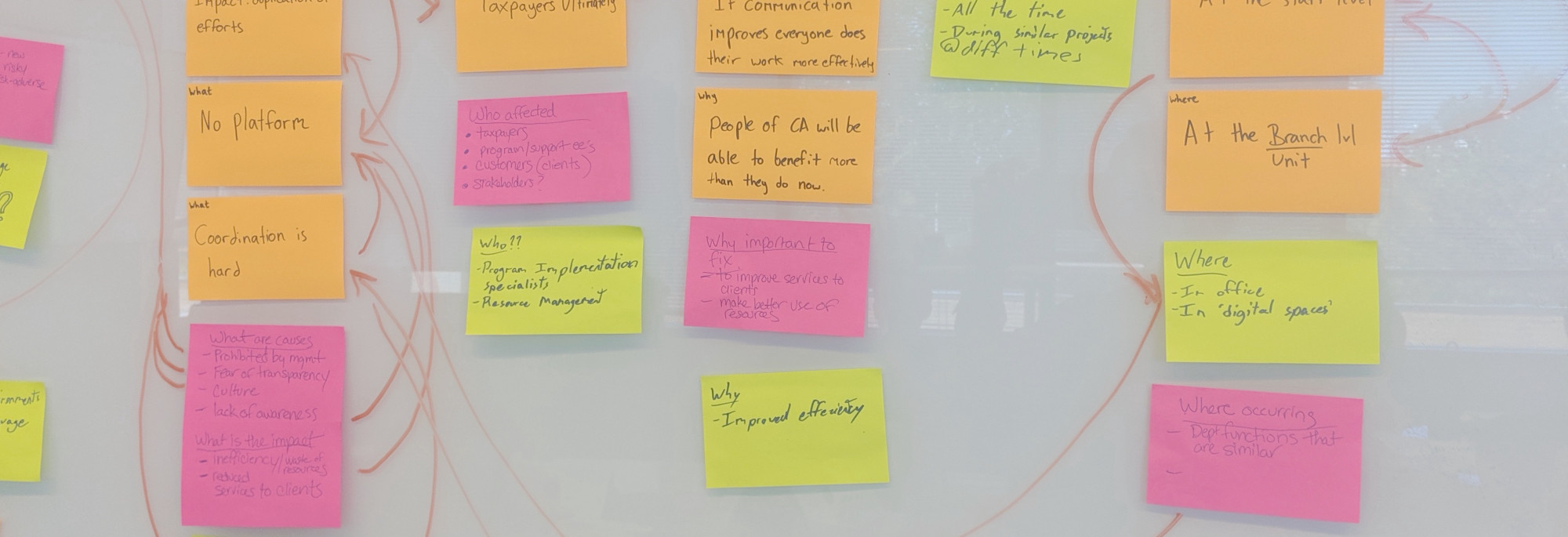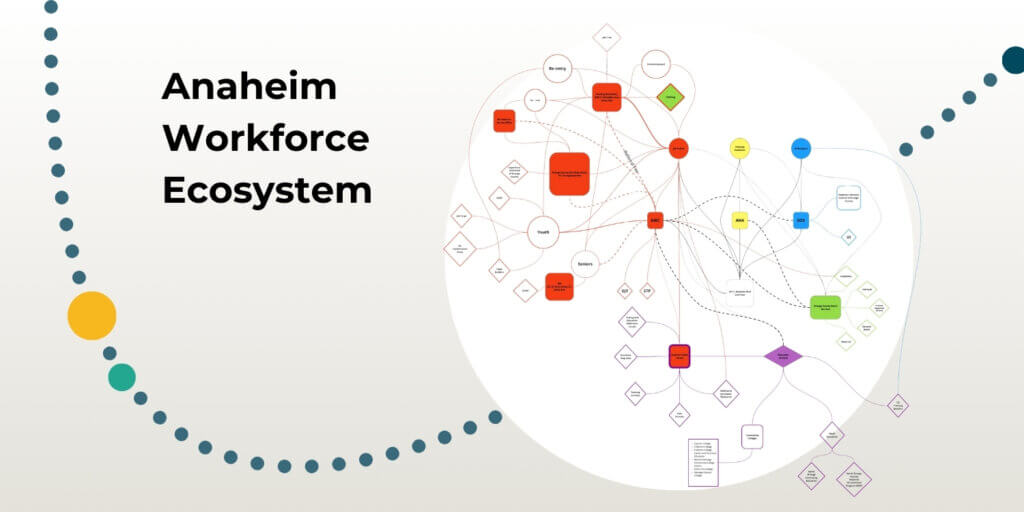Everything is Data: Making Sense of COVID-19 with Human Connection

Finding hope for positive systems change from an informal online meetup with public servants
I’ll admit it. I’m a compulsive data collector. As a genuinely curious human, I believe everything is data. And not just numbers in a spreadsheet, but also conversations, body language, even the emojis we favor in text messages. When we ask questions and listen deeply and attentively, we gain deep insights, perhaps especially so in informal settings, where data gathering may not be expected. Thoughts, ideas and feelings in these contexts are not filtered through an expectation of what “should” be said, as you might find in more traditional user interviews. Rather, the data shared becomes like many of our collective emotions at this time — raw.
As online gatherings proliferate, certain segments of the shelter-in-place and/or “stay at home” contingent — those lucky enough to have internet access and devices — are seeing opportunities to connect with people we may not typically have spent informal time with in real life.
I recently found myself at such a gathering: a virtual Happy Hour with about 15 people from across California who are working hard to increase access to services, information and resources in order to decrease the negative impacts of COVID-19 on Californians. I took this as an opportunity to gather “raw” data — as I do. I asked individuals in that group the following prompt:
“What will be the most positive systemic change to come out of this pandemic?”
The richness of the conversation, and themes that surfaced, filled me with hope and positivity in these uncertain times. The inputs provided me with components that I can fit into my own mental and heart systems as I try to make sense of this crisis. So, assuming this data may also be helpful to others, I wanted to share it.
Below is a collection of quotes and key words — the raw data that I have synthesized and categorized throughout. Read on to see what a variety of passionate people in and around public service throughout the State of California (and beyond!) are sharing with each other.
—
The most common theme that arose when the question of positive systemic change was posed was that of greater human connection. I’ve broken this down into three categories: for individuals, in the (virtual) workplace, and through community.
Individuals
A participant shared her experience that people around her (albeit, not physically) have been more accepting, kind, loving and supportive. She knows this from some of the data she’s collected, in the form of heart emojis. ❤
She dug deeper, remarking on the increased acceptance she’s observed at our own fallibility as humans. Suddenly there seems to be less emphasis on, or need for, egos and turf wars — a particularly heartening insight from someone who has built a career around dismantling silos within government. “Accepting our imperfections, being human, and sharing our authentic selves” are three attributes she ascribes to this characteristic.
Another participant added that this time has forced people to look closer at their reality, examine what’s important to them, and what relationships are needed to reinforce what’s important. Another expressed this sentiment by acknowledging that shelter-in-place has disrupted everyone’s habits, and is encouraging us to “re-evaluate everything.” He said this is “so disruptive to fundamental human needs that the world has fundamentally changed forever.” “We no longer have an excuse not to show up.”
Simply put by another contributor: “This is a reset. A reality check.”
In the (virtual) workplace
One of the subcategories of human connection had to do with how people are connecting with their colleagues, outside of the physical work environment. In some cases, they are meeting folks from other departments within the same agency, with whom they may never have had the in-person opportunity to play in the type of informal, virtual space like that of this happy hour. Someone remarked, “this has presented the opportunity for people to connect outside of work — even though we can’t physically connect…” and to the prompt I asked, someone else responded simply with “this!” meaning the virtual room we were co-creating together.
This theme was expanded upon when a member of a government digital team mentioned that they’re seeing more people they work with outside the “workplace” than they may ever have in person. According to him “none of this would be possible without the internet ,” which he said was one of the main differences between this and other pandemics.
On the other hand, some folks are trying to figure out the digital equivalent of stopping by someone’s desk or knocking on their office door. Others expressed their colleagues’ increased comfortability with being exposed to what they as individuals experience in the home, such as dogs barking in the background and children vying for attention. This, as one participant noted, affects leadership as much as frontline staff, to which another participant exclaimed, “We’re all humans!”
What might this mean for how we reimagine workplaces? This concept of human connection was further explored in what I’m calling the “community” layer.

In Community
DISCLAIMER: After sifting through the main theme of human connection emerging for individuals and the workplace, quite a few responses mentioned children and life at home. I have chosen to group this under “community” wherein I am revealing my own bias as a researcher and data collector, which is that children and families are a significant part of community. Even though I personally am decidedly child-free, I’d like to imagine a world where our decisions as individuals take into account the tiny humans our colleagues and friends are raising during this time, and that we have an obligation to ensure a more beautiful world for those children, regardless of whether we have our own. The following data, then, includes this subcomponent of the major theme.
One parent in the group acknowledged that his kids had always said they wanted more time at home. Now, however, they want to talk to real people; they are, like many of us adults, yearning for the days when they could go outside and interact with other humans. As a result, some participants predict that children who are experiencing shelter-in-place will have a greater appreciation for human connection. Put one way, “this generation will mark a defining moment, and this event will be a catalyst to that.” Another claimed that children who experience shelter-in-place may suffer from less anxiety, since they are closer to the activities of their parents, or simply from the well-documented evidence that families having dinner together more frequently equals stronger families which, at least according to this author (me!), might actually translate to stronger communities.
One of my favorite quotes was: “The sense of community is going to have a major impact…we’ll actually think about what it means.” This was followed up with “everyone is thinking more intentionally about how they interact with other people.” The sentiment was shared that we’ve had the ability to connect with each other in this way, digitally, for years. And “this,” as we came to call it as a group, is forcing us to do so.
To extend this thread, another happy hour-goer described the implications for broader community: “one of the biggest things we’ve created is an avenue for civic engagement.” People are able to get together, listen, and make decisions — all without actually leaving their homes.

Outliers
This wouldn’t be qualitative data synthesis of an unsuspecting public servant happy hour (hey, at least I wore a funny hat!) without acknowledging some outlying themes. I’ll just list them here, but would love to dig into these further, if anyone is interested!
- “Government becoming more adept at digital and distributed service delivery and design. Now that we’re forced to do it, how can we sustain it to make sure we’re more effective?”
- This exclamation by one attendee: “I think we’ll have national healthcare!” When laughs followed, she clarified, “Well, I can dream.”
- And, on further expansion, “People will realize that elections have consequences.”
- “The rapid adoption of tele-health services throughout the country will have positive impacts for us all, and on rural communities, in particular.”
Gratitude
To have occupied a digital space with folks who are on the (virtual, in this case) frontlines of protecting Californians from this global pandemic, AND to have had the privilege to hear, in their own words, the positive systemic change that may result, is nothing short of humbling. From the individual experience of looking inward, to that of (some of us) learning how to collaborate remotely, to redefining concepts of “community,” I’d like to extend some heartfelt gratitude to the humans who answered my prompt, many of whom I had never met.
In a sea of information, charts, curves, mandates, orders, ending presidential campaigns and all the other inflows we are beholden to when spending most of our days looking at a screen, this was a bright spot — for me, at least.
Special thanks to my CivicMakers partners, Cristelle Blackford and Lawrence Grodeska, for their helpful edits/suggestions, as well as some participants in the Happy Hour who will remain anonymous. 🙂



